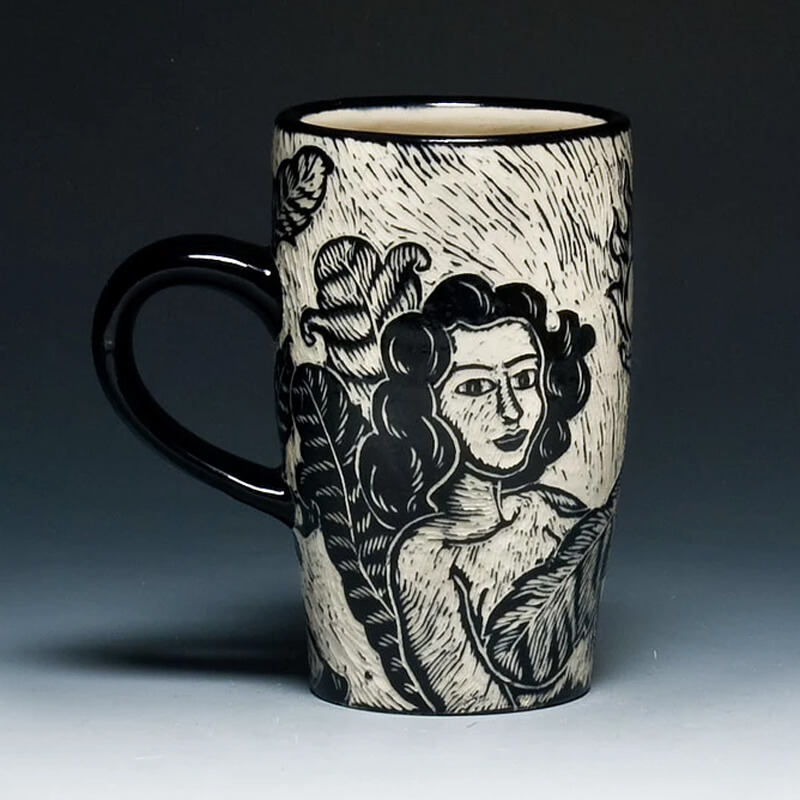
Kathy King is currently an active studio artist in the Boston area and is an Instructor and the Director of the Ceramics Program – Office for the Arts at Harvard in Allston, MA. She has held positions as a Visiting Faculty member at the Massachusetts College of Art in Boston, Rhode Island School of Design in Providence, RI and University of Massachusetts in Dartmouth, MA. Prior to moving back to the Boston area in 2008, she was an Associate Professor at Georgia State University in Atlanta, Georgia. Her undergraduate work included the School of the Museum of Fine Arts in Boston, MA and she received her BA in Studio Art with a major in Ceramics from Connecticut College, New London, CT in 1990. She received her MFA from University of Florida in Gainesville, FL in 1998. She has given workshops and lectures at over seventy-five colleges, schools and art centers throughout the USA.
The National Council on Education for the Ceramic Arts has featured King as an Emerging Artist in 1999, a Demonstrating Artist in 2002, a co-juror with Mark Burns for the 2012 National Student Juried Show and been a lecturer and panelist on multiple occasions. In 2018, she was awarded a Brother Thomas Fellowship by the Boston Foundation, Boston, MA. She was awarded a Craft Schools US Residency to the Shigaraki Ceramics Cultural Center and other residencies include Archie Bray Foundation in MT and Watershed Center for Ceramic Arts in ME. Her work can also be found in numerous publications and periodicals including Ceramics: Art and Perception, Studio Potter, Clay Times, Art Papers and Ceramics Monthly. She has served on the Board of Directors of Studio Potter and currently serves on the board for The Marks Project and the Collections Committee for the Fuller Craft Museum. She can be contacted via www.kathykingart.com.
My work centers on the presentation of narrative through ceramic vessels, tile work and printmaking, either separately or combined in installation, with a feminist and queer point of view. I am interested in mapping the ways popular culture not only reflects women’s lives, but also shapes them. It is this influence that demands critical examination.
The use of satirical humor, irony and sarcasm often provides a seductive vehicle to approach issues of gender and sexuality within my work. The combination of narrative presented on the surface, united with the intended utility of each vessel, allows a dialogue between the essence of the object and its narrative. Individually, each pot’s narrative may convey a singular thought, but when the work is considered together in a serial format, the story unfolds.


